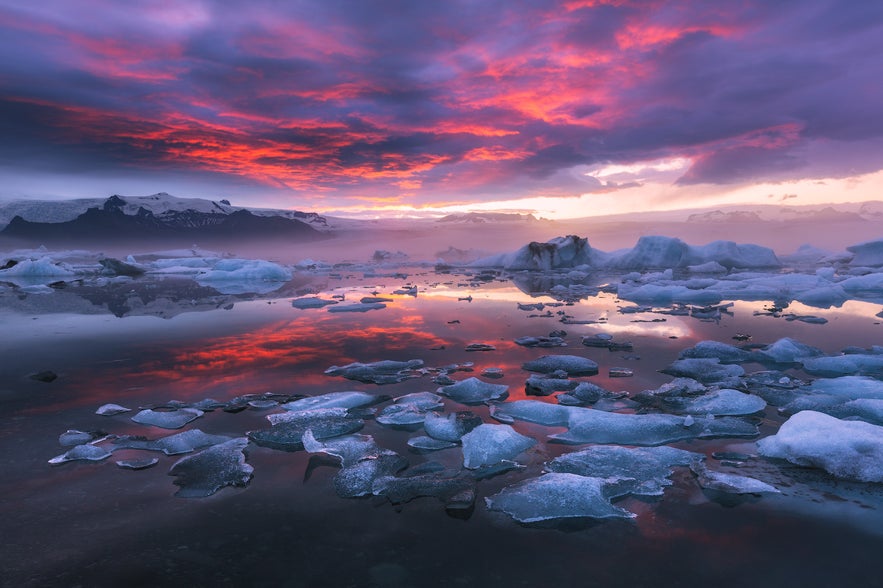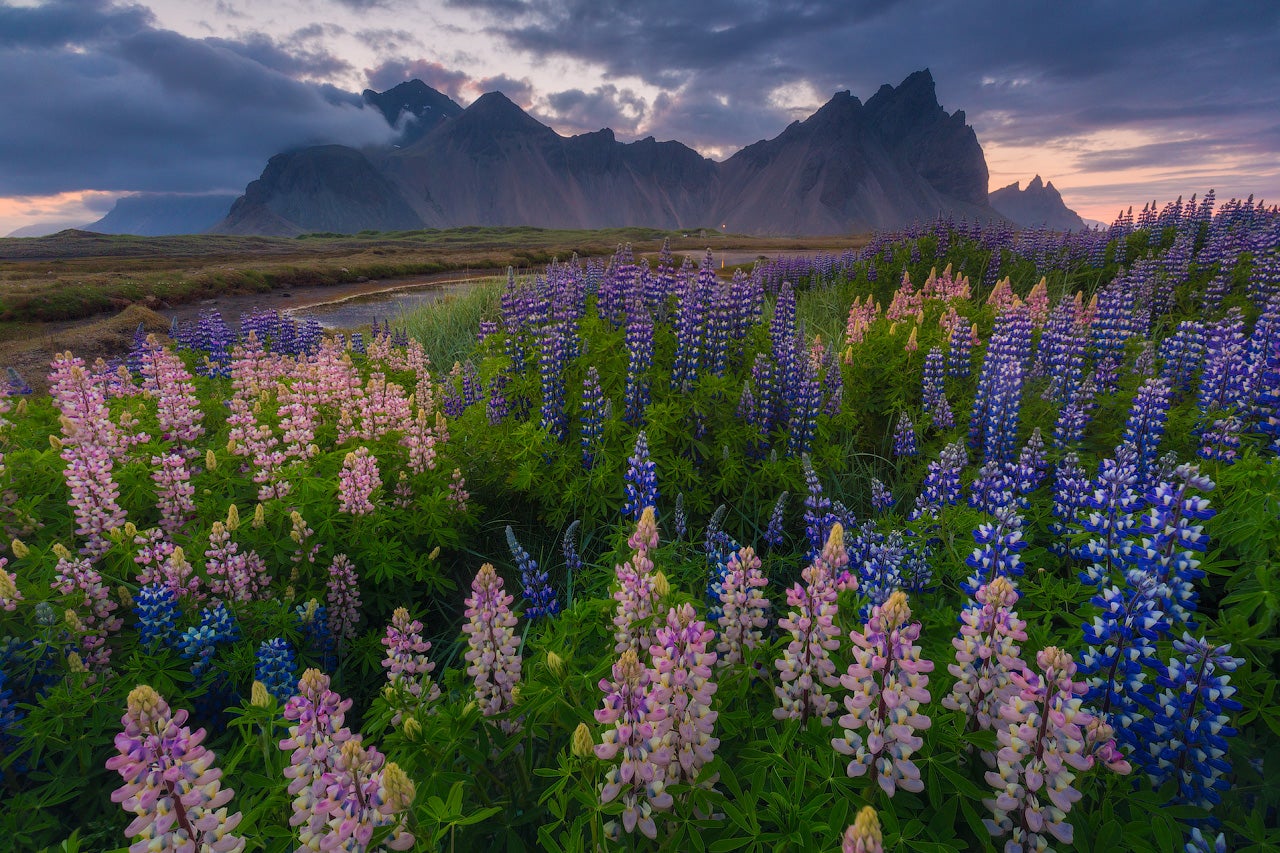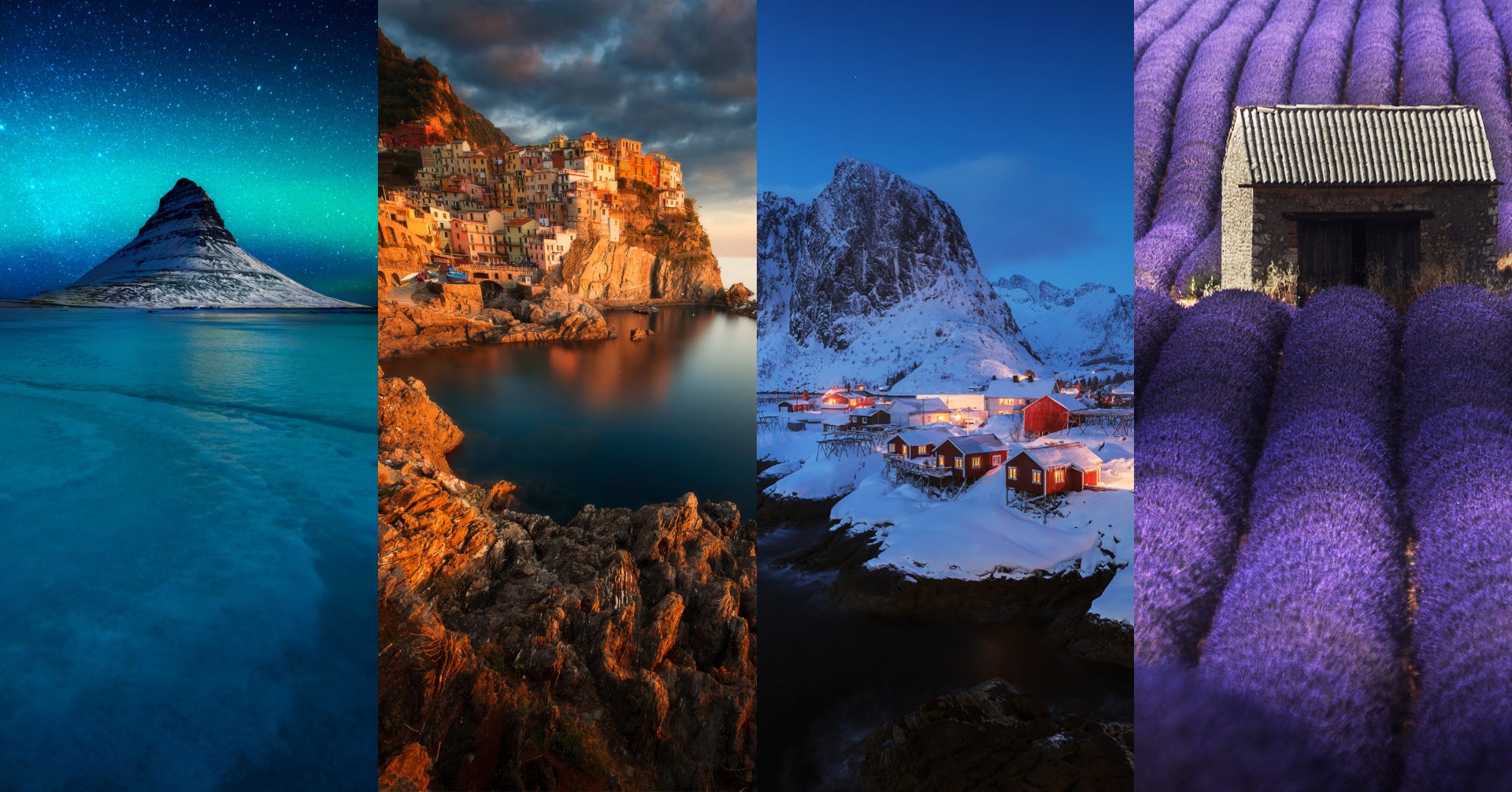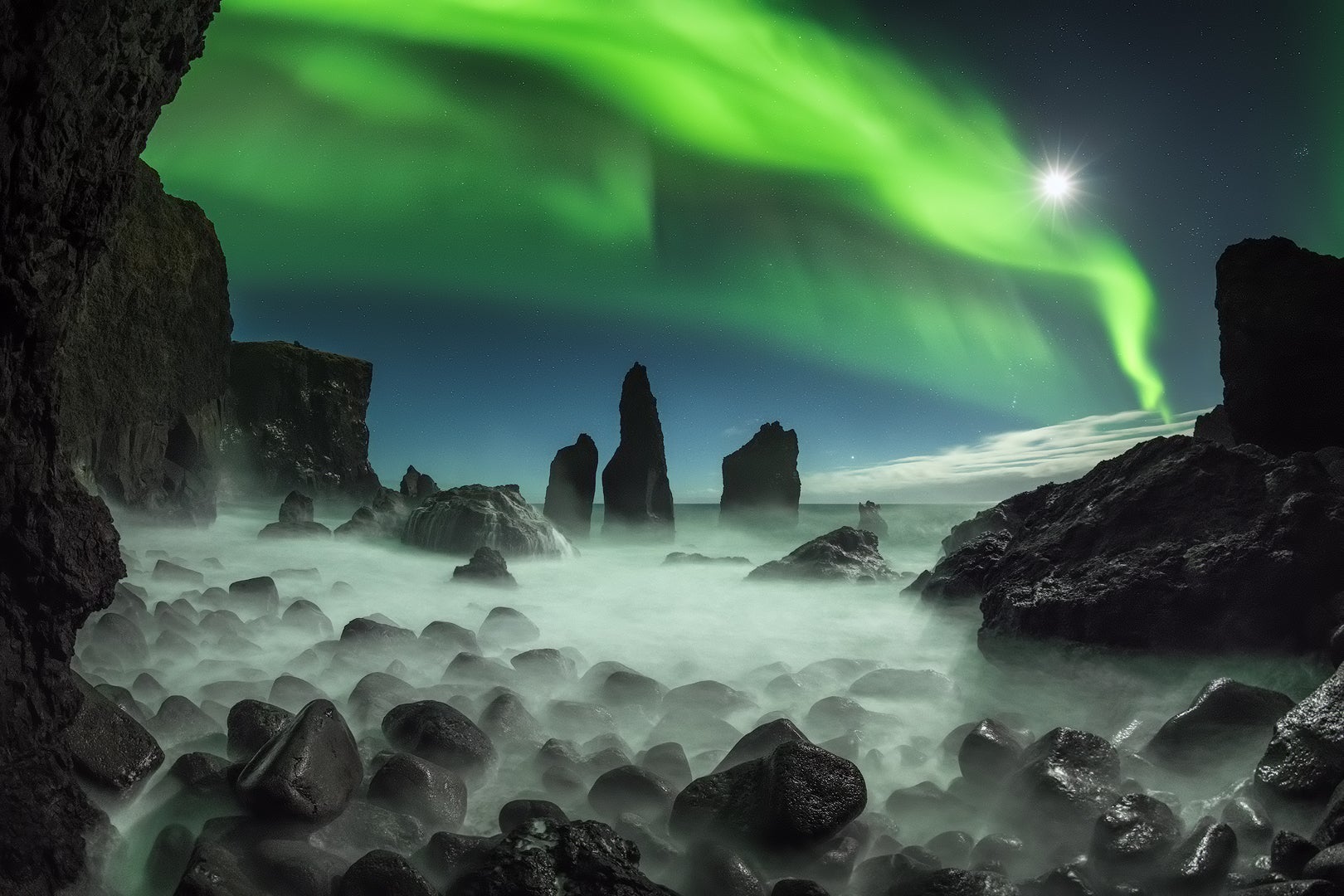
Have you been thinking of planning a photography trip to Iceland? Well you’ve come to the right place!
- Check out these articles on Photography Techniques
- See these 11 Tips to Help You Capture Stunning Landscape Photographs
In this article, we are going to go through everything you’ll need to consider, from the best time to visit Iceland for photography right through to the regions you might want to see. We’ll explore different itineraries, give you practical advice on things like money and tipping, as well as the steps you should take to have the perfect photography tour.
Planning a Photography Trip to Iceland
Decide When to Visit Iceland
The time of year that you visit Iceland will have a huge impact on what you’ll get to see and photograph, as well as your overall experience and how busy the main attractions will be.
 Knowing when to visit is an important step in planning your trip to Iceland. Photo by: 'Iurie Belegurschi'.
Knowing when to visit is an important step in planning your trip to Iceland. Photo by: 'Iurie Belegurschi'.
For landscape photography, planning a trip involves knowing what is available to photograph throughout the seasons, as well as the best time to travel in order to capture those subjects.
Of course, you'll still have to take your own time into account and whether you can get leave for a particular period during the year, though knowing roughly when to travel for the best landscape photography opportunities will allow you to apply for time off from work well in advance.
It will also give you enough time to do enough research in the lead-up to your trip, so that you'll have an idea of the locations where you'll be shooting and be able to plan accordingly.
 Some locations in Iceland become inaccessible during the winter months. Photo by: 'Iurie Belegurschi'.
Some locations in Iceland become inaccessible during the winter months. Photo by: 'Iurie Belegurschi'.
Visiting Iceland in Winter (October to April)
Winter is the least busiest time in Iceland, though it is also the season during which it is the most difficult to get around. The roads get blocked up with snow, conditions are harsh and some roads might even close. However, the chance to see the Northern Lights and to explore ice caves kind of makes up for it all!
 Winter is the best time to photograph ice caves in Iceland. Photo by: 'Iurie Belegurschi'.
Winter is the best time to photograph ice caves in Iceland. Photo by: 'Iurie Belegurschi'.
The closer that it gets to December, the darker the skies will be. If you visit near Christmas, then you’ll see about 4-5 hours of soft daylight, which is perfect for atmospheric and moody shots.
If the skies are clear, then you’ll be able to spend the rest of the time hunting the elusive Aurora. If not, then be prepared to hunker down in all your cosy layers to wait out the weather.
 The Northern Lights also make a display during winter in Iceland. Photo by: 'Iurie Belegurschi'.
The Northern Lights also make a display during winter in Iceland. Photo by: 'Iurie Belegurschi'.
Check out our winter photography workshop itineraries to see what else is available.
Visiting Iceland in the Shoulder Seasons (May to June, September to October)
Spring is when it starts to get busy in Iceland. From May to June, the nights begin to get shorter in the lead-up to the Midnight Sun season.
 Wildlife is in abundance during spring and autumn in Iceland. Photo by: 'Iurie Belegurschi'.
Wildlife is in abundance during spring and autumn in Iceland. Photo by: 'Iurie Belegurschi'.
During this time, the country gets greener as the snow melts away. You’ll start to see dormant plants coming back to life, more sunshine, and an abundance of wildlife. Spring is when foaling and lambing begins – the countryside will be dotted with sheep and Icelandic horses nursing their cute little newborns as they are released from the farms back out into the fields.
Autumn in Iceland runs from around September through to October. During this period, the foliage will turn into a myriad of different colours as fall takes hold. It is also the time when all the sheep and horses are herded back to the farms, in preparation for the long winter months ahead.
 The Northern Lights are visible in Iceland during autumn. Photo by: 'Iurie Belegurschi'.
The Northern Lights are visible in Iceland during autumn. Photo by: 'Iurie Belegurschi'.
Although the shoulder seasons are a great time to visit, when more of the roads and attractions are open and easily accessible, the longer days will limit your chances of seeing the Northern Lights. However, it is still very possible to capture the Northern Lights during autumn, before the winter snow sets in.
Perhaps the biggest downfall is that you won’t be able to visit ice caves during the shoulder seasons as they become inaccessible in warmer temperatures. For those who are keen on coming to Iceland during this time of year, it's a great time to travel so check out our Autumn photography workshops around Iceland.
Visiting Iceland in Summer (June to July)
Summer is a beautiful time in Iceland, as the wildflowers bloom all over the country and it seems that everything has come back to life. It is also the most popular time to visit Iceland, so everything is a bit more expensive and the attractions tend to be more crowded with visitors.
 The Midnight Sun means endless hours of photography during summer in Iceland. Photo by: 'Iurie Belegurschi'.
The Midnight Sun means endless hours of photography during summer in Iceland. Photo by: 'Iurie Belegurschi'.
During summer, Iceland experiences a phenomenon known as the Midnight Sun. This means that the country is bathed in sunlight for almost 24 hours a day. The period before sunset and sunrise, what photographers call the ‘Golden Hour’, effectively occurs from midnight into the early morning. This results in endless hours of shooting with gorgeous lighting – as long as you’re prepared to stay up and out during these long days!
 Golden hour lasts for longer than just one hour! Photo by: 'Iurie Belegurschi'.
Golden hour lasts for longer than just one hour! Photo by: 'Iurie Belegurschi'.
With so much daylight, you won’t be able to see the Aurora Borealis in Iceland during summer. Glacier hiking will still be possible, though ice caves will no longer be accessible. For a list of all of our summer tours, take a look here.
Choose an Itinerary
Deciding upon the regions you want to travel to in Iceland will help you to pick an itinerary for your trip. It will also help you to figure out how long your photography tour should be, in order to capture all the sights that you’ll want to cover.
If You Only Have 1 - 3 Days in Iceland
For those with only a short stopover in Iceland, joining a private day tour, private multi-day tour or one of our 2 day summer and winter tours are the best option.
 The Geysir geothermal area is one of the most popular sites on the Golden Circle route in Iceland. Photo by: 'Iurie Belegurschi'.
The Geysir geothermal area is one of the most popular sites on the Golden Circle route in Iceland. Photo by: 'Iurie Belegurschi'.
These tours generally cover a small region within Iceland. For example, you could choose to visit the attractions on the Golden Circle, such as Þingvellir National Park, the Geysir Geothermal Area, and Gullfoss waterfall. Each of these sites are known all over the world and are as spectacular as they are unique. None of them is further than a two hour's drive from Reykjavík, and all three can be visited within a day.
 Seljalandsfoss is one of Iceland's most famous waterfalls. Photo by: 'Iurie Belegurschi'.
Seljalandsfoss is one of Iceland's most famous waterfalls. Photo by: 'Iurie Belegurschi'.
Alternatively, you could head along the south coast to photograph some of Iceland’s most famous waterfalls, including Seljalandsfoss and Skógafoss.
 Get off the beaten track in the Icelandic Highlands. Photo by: 'Iurie Belegurschi'.
Get off the beaten track in the Icelandic Highlands. Photo by: 'Iurie Belegurschi'.
For those who are wild at heart, consider getting off the beaten track to capture the raw beauty of the Highlands.
If You Have 3 - 7 Days in Iceland
For those with up to a week in Iceland, you’ll have a little bit more choice in terms of where to go and how much time you spend in each location for photography.
 The majestic Kirkjufell on the Snaefellsnes Peninsula. Photo by: 'Iurie Belegurschi'.
The majestic Kirkjufell on the Snaefellsnes Peninsula. Photo by: 'Iurie Belegurschi'.
You could head out to the magical Snæfellsnes Peninsula, home of the famous Arrowhead Mountain from Game of Thrones, otherwise known in Iceland as Kirkjufell. This region is known for its dramatic landscapes and basalt sea stacks. Combine it with a jaunt out to the remote Westfjords to capture puffins nesting along the coastline and the beautiful seven-tiered waterfall known as Dynjandi.

 Icebergs shimmer like diamonds in the Jokulsarlon glacier lagoon. Photo by: 'Iurie Belegurschi'.
Icebergs shimmer like diamonds in the Jokulsarlon glacier lagoon. Photo by: 'Iurie Belegurschi'.
One of the most popular destinations in Iceland is the south coast, where you’ll be able to photograph all of the delights within the Vatnajökull National Park, such as Jökulsárlón glacier lagoon and the famous ice beach, where icebergs shaped like diamonds wash ashore.
 Skogafoss is one of the most popular waterfalls in Iceland. Photo by: 'Iurie Belegurschi'.
Skogafoss is one of the most popular waterfalls in Iceland. Photo by: 'Iurie Belegurschi'.
With so many days, you’ll even be able to squeeze in the Golden Circle, as well as the mighty waterfalls of the south coast. For more details, see our 3 Day Photo Tour of the South Coast & Vatnajokull National Park and 5 Day Winter Photo Workshop | South Coast, Glacier Lagoon & Waterfalls.
Alternatively, you could spend 4 incredible days immersing yourself in ice caves and chasing the Northern Lights.
For Those With A Little More Time Up Their Sleeves
If you have over a week for your photography trip in Iceland, then you’ll have more than enough time to see all of the major highlights around the country. There will be an endless amount of photo opportunities, particularly if you follow the Ring Road.
 Aldeyjarfoss is an extraordinary waterfall in the north of Iceland. Photo by: 'Iurie Belegurschi'.
Aldeyjarfoss is an extraordinary waterfall in the north of Iceland. Photo by: 'Iurie Belegurschi'.
You’ll be able to go around Iceland in a circle, photographing the Snæfellsnes Peninsula, the stunning Westfjords, beautiful Lake Mývatn in the north, the explosive waterfall Dettifoss in east, all the magic of the Vatnajökull National Park and the enchanting black sand beaches at Vík before heading back to Reykjavík.
Keep in mind though that the northern part of the country is more difficult to access in winter, due to road closures formed by snow and ice, so joining an organised photography tour is the best option.
What to Pack for Your Photography Trip to Iceland
Camera Gear
In general, when packing camera gear for your trip to Iceland, you'll want to bring a high megapixel full frame Digital SLR or mirrorless camera, with good low-light capabilities. You should also bring a selection of lenses, including a telephoto lens, standard zoom lens and an ultra wide angle lens.
A sturdy and dependable tripod is a must for shooting in windy conditions and ensuring sharp images.
You may also want to consider bringing some neutral density filters or a polarising filter to help you achieve certain creative effects.
For more information on what to pack, check out our Camera Gear Recommendations for Photography in Iceland.
Clothing
One of the most common questions that we get is what to wear for photography during summer and winter in Iceland.
During all seasons in Iceland, you should pack warm layers that are both windproof and water resistant. If it gets too hot, then you can simply take layers off, while if it's too cold then you can put them back on.
Check out our packing lists for summer and winter photo tours!
Practicalities For Your Trip in Iceland
Now that you’ve got the season and itinerary covered for your photography tour in Iceland, let’s consider some of the practicalities that you should plan for when you travel.
Safety in Iceland
Iceland is one of the safest countries in the world, with a low crime rate and very good health care. The weather conditions can be difficult to navigate though, particularly for inexperienced drivers. Car accidents are a major concern, particularly during winter. If you are keen on visiting ice caves or glacier hiking, then only ever go with an experienced guide.
 For your own safety, you should only visit ice caves with a reputable guide. Photo by: 'Iurie Belegurschi'.
For your own safety, you should only visit ice caves with a reputable guide. Photo by: 'Iurie Belegurschi'.
One step to be safer in Iceland is to make sure that you download the Icelandic 112 app for your smartphone. It is useful for two things:
-
First of all, you can call for help by pressing the red Emergency button. Your location will be sent by text message to the 112 response centre. Remember that even though your phone shows no signal there is a possibility that you can send text message.
-
Second, you can “check in” on the app to leave your location with the 112 response centre, so that if something happens, then they have your last known location to work with.
What Language is Spoken in Iceland?
The primary language in Iceland is Icelandic, though English is very widely spoken. You will have little difficulty communicating with people in Iceland, as everyone is generally very friendly, helpful and welcoming!
Money / Currency
The local currency in Iceland is the Icelandic Kroner, or ISK.
Nearly everywhere that you travel in Iceland will accept international credit and debit cards, so there isn’t any real point to carrying any cash.
However, there are ATM’s around the country from where you can withdraw money, usually located at banks. Just be aware that they will all charge you a fee for doing so.
Tipping in Iceland
Tipping is generally not expected in Iceland. If you wish to leave a tip though, then around ten percent is a reasonable amount.
Alternatively, many people choose to round up the bill to the nearest 1,000 ISK, which is also very acceptable.
Power
Iceland uses a 220v system with the same two pin plugs as most of Europe.
You can pick up a travel adapter at Keflavík International Airport before you exit the duty-free area.
Internet Access / WiFi
WiFi is generally easy to find in Iceland, though the signal may be weaker in locations further out from Reykjavík.
In some locations off the beaten track, such as in the Icelandic Highlands, there may be no signal at all.
You can pick up a pre-paid SIM card with data for getting online at Keflavík airport when you arrive. A SIM card from a local provider such as Síminn is likely the cheapest option.
Photography in Iceland can be a challenge, so now that you’ve got all of our tips for planning a trip to Iceland, check out some of our photo tours and workshops to make the most out of your time here.
About the author: Serena Dzenis is a landscape photographer based in Iceland. You can find more of her work on her website or by following her on Facebook and Instagram.
At Iceland Photo Tours, we have some of the world's best and most passionate landscape photographers / instructors to help you capture the beauty of what Iceland's seasons have to offer. From Midnight Sun tours in the summer right through to hunting the Northern Lights and exploring ice caves during the winter, let us help you organise a trip that you will never forget.












